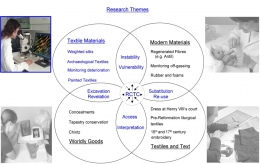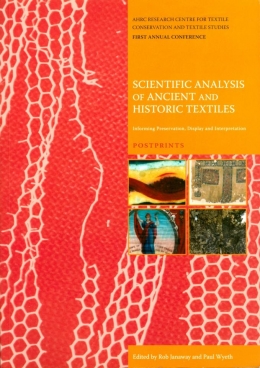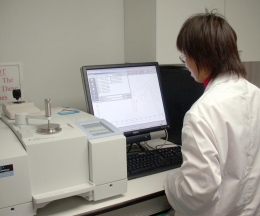Textile Materials
This theme focused on technical, historical and archival research to address a range of conservation problems including:
- The preservation of 19th and 20th century silks weighted with metallic salts. These textiles form a large part of most dress and social history collections. Such treatments at the time of manufacture (to increase the weight of the silk and to give it a fashionable ‘rustle’), have a severe degrading effect on the fabric. This is manifested as weakness and shredding of the silk, with characteristic patterns of slits.
- The characterisation, deterioration and conservation of archaeological textiles. Excavated textiles present both documentation and conservation problems, and instrumental methods of analysis were applied to their characterisation. Two very similar bast fibres, linen and hemp, can now be distinguished, even when in a degraded condition, and just microsamples of other fibres can be characterised readily. A simple micro-methodology for determining the state of silk deterioration has been developed.
- An investigation of painted textiles. Painted textiles, e.g. trade union and heraldic banners, pose significant conservation problems due to their size and inherent instability. The painted sets of Normansfield Hospital Theatre provided a useful case study, involving the characterisation of the ground fabrics and paint layer.



